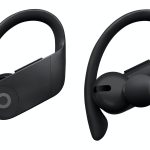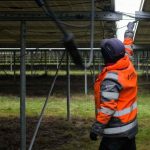It comes as health authorities listed six shopping precincts of “particular concern” and warned how quickly the virus was spreading from “stranger to stranger”. Anyone who shopped at Craigieburn Central, Bay Street/Clarendon Street in South Melbourne, Pacific Epping, Broadway Reservoir, Station Street Lalor and Brimbank shopping centre in the past fortnight is being urged to get tested. Victoria’s Covid testing commander Jeroen Weimar warned that at least four of the state’s more than 50 locally transmitted cases had come from “fleeting” contact between Victorians.“What we’re seeing now is people are brushing past each other in a small shop, they are going to a display home, they are looking at photos in a Telstra shop,” he said.“This is relatively speaking relatively fleeting. They do not know each other’s names, and that is very different from what we have been before.“This is stranger-to-stranger transmission.”Woolworths is providing Everyday Rewards data to assist with contact tracing, while Coles is also handing over details from its Flybuys customer loyalty program.Following the latest outbreak in Melbourne, Woolworths has also reintroduced health ambassadors across all of its Victorian stores.“They‘re encouraging shoppers to make use of our CovidSafe measures, including our voluntary customer check-in on the Victorian government’s QR code system,” a spokesperson said. “When a positive Covid case visits our stores, we work closely with health authorities to assist with public notices and contract tracing.”Deakin University chair of epidemiology Catherine Bennett said the data could be “valuable” for contact tracers as more shopping centres continue to be added to Victoria’s growing list of more than 350 exposure sites.“Contact tracers should be using anything they can from a store, particularly if they don’t have a check-in system,” she said. “Some of these exposure venues like the Telstra stores, where it clearly appears a worker was infected, there should be records of everyone who was working there during the day.“In stores, for example, once authorities have linked a positive case to a store, then if they have extra detail such as shopping receipts and loyalty card data they can go harder to find someone who may not have stepped forward for testing.”Professor Bennett said the list of exposure sites was providing “rich data” for health authorities to understand how the virus was spreading through the community.“It helps us to understand where our weak points are,” she said. “We worry about nightclubs, but at the end of the day this gives us rich data that it’s probably your local meat or grocery store where the virus is spreading.”
Powered by WPeMatico






